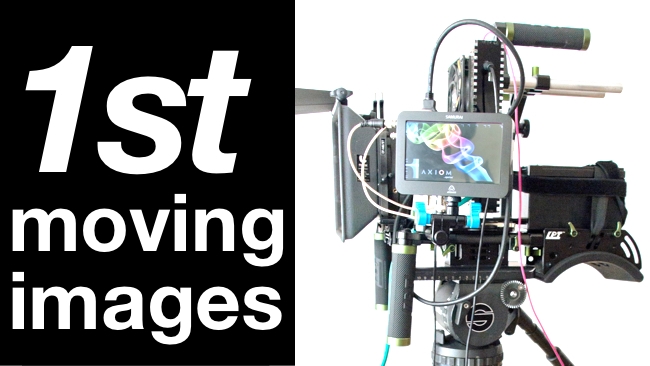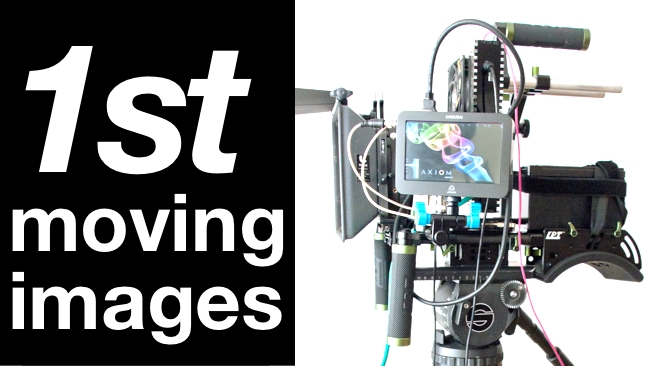
 Apertus Axiom Breakthrough
Apertus Axiom Breakthrough
The Apertus Axiom Prototype, the "proof of concept" camera for the open source camera project, has sprung into life, giving the world some enticing early-stage moving pictures, and, in doing so, effectively saying "you can get excited about this project now"
It's a big moment for the project and the people involved who've given so much of their time and energy.
We spoke to Sebastian Pichelhofer, from Apertus, who's been keeping us up to date with developments. Here's what he told us:
"When you create a photo camera, it's all about producing a picture. When you create a video/film camera it's all about producing motion pictures.
We have now been working on the creation of the Axiom camera for over three years ( and the Axiom evolved over time as we progressed). Up until now we had no real proof that the camera existed or even that it works and good number of people told us that there is no way we will be able to succeed or that it will ever be good enough at the time it was released. You can imagine that created a huge amount of doubt, concern and skepticism (as well as anticipation) over time (even in the team).
After all who could really know if we weren't wasting more than three years of our lives with this! But we kept pushing and never gave up.
Now that we have (eventually!) released the first footage recorded with the camera it's a huge relief for us.
Of course not everything is perfect yet, but our open philosophy has always been to share the problems and bad things just as much as the good news.
So looking at this early footage now we can already see that there is a huge amount of potential we are sitting on and that the the many thousand hours of unpaid work we put into the project over the last years were not wasted after all.
Now the actual work begins ;)"
Not straightforward at all
You can see from Sebastian's blog post here that creating a new camera is not straightforward at all. And certainly not when you consider the specifications that they're aiming for:
Global Shutter
4K resolution
Super35 sensor
Uncompressed 4K raw
Full HD HDMI (up to 60 FPS Deep Colour)
And so on.
As a stopgap measure - or maybe ultimately as part of the camera system, they've used an Atomos Samurai as a video recorder - and even that wasn't straightforward. Most HDMI devices will simply slave to an incoming signal, but HDMI recorders are very fussy about what they receive (and so they should be: if they were happy to record anything, your final recordings could be out of spec and unusable). So, as Sebastian says in his blog - it was a matter of tweaking the refresh rate by a few hertz until the recorder sprang into life.
A good sensor
Using an off-the-shelf sensor - i.e buying one from a sensor manufacturer - doesn't imply that it's all set up and ready to go. In fact the opposite is the case. Assuming that the sensor is a good one, which this is, then there are multiple rounds of calibration to go through before the image is optimised.
One of these processes is Fixed Pattern Noise Correction, where any irregularities in the image from the sensor that are caused by a fixed pattern of small defects can be compensated for. Once this is done, they'll hardly affect the picture at all, but if this stage is missed, there's a significant loss to the picture quality. Sebastian tells us that there were bugs in the software they had written to zap the fixed pattern noise but these have now been fixed.
The sensor they are using has what is effectively a real-time HDR (High Dynamic Range) mode which allows Knee Points to be set to adjust the response curve and substantially increase the dynamic range of the camera. We're told that there are many knobs to tweak here and that the set up process has only just started. The results so far seem pretty good!
Early days
These are still very early days for this project. Nobody is completely sure what shape or form the final "production" camera will take - and of course, since it's open source - there may never be a final shape; not a single one, anyway!
This a completely new concept in camera design and production. With the rapid pace in technology, there's always a danger that whatever specification the Apertus team and the OS developers/engineers are working on will become outdated. But, with a modular camera like this, exactly the opposite might be the case: that it will never become outdated. Ever.
Now that's a concept to grapple with!
Video after the break
Tags: Technology


Comments